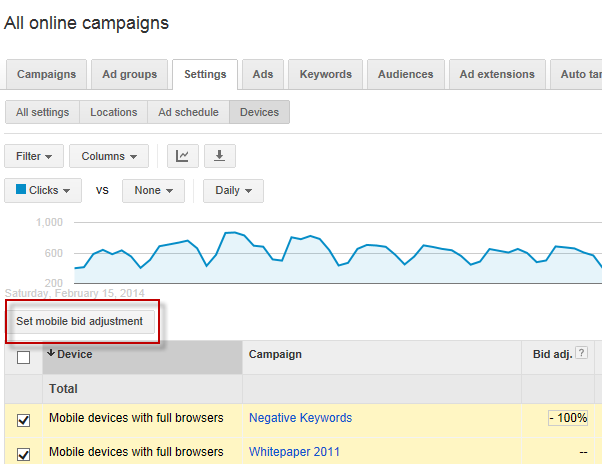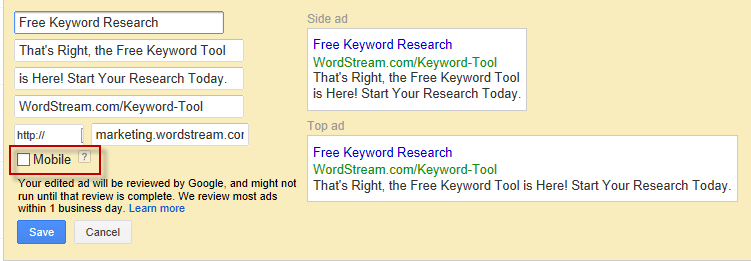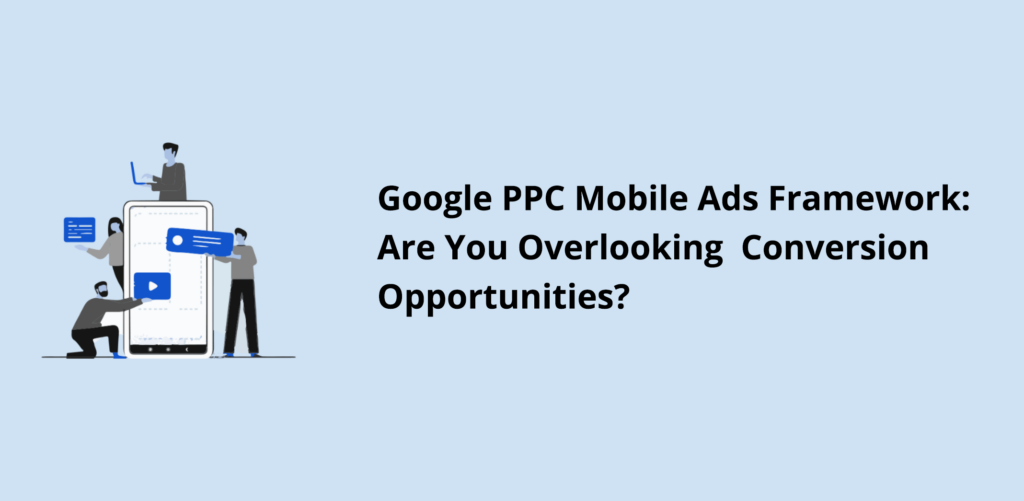Google PPC Mobile Ads Framework: Are You Overlooking Conversion Opportunities?
It’s a safe bet that your mobile device is your constant companion, from morning to lunch breaks. Smartphone addiction is a commonality we all share, but what does this mean for your search marketing strategy? Let’s dive into some compelling statistics linking mobile and search:
- A recent Google study reveals that 74% of mobile consumers incorporate a search engine in their research process.
Shockingly, 93% of mobile researchers make a purchase .
Cross-channel personalization entices 52% of mobile shoppers to buy more.
And the mobile trend is the only trend that stands out today in the world of marketing.
If your majority of searches, clicks, and conversions still occur on desktop, you might consider excluding google mobile ads advertising altogether. But how can you determine if the mobile realm holds opportunities for your business? Start by asking yourself:
- Are my products or services something people typically research or purchase on the go?
- Does my business receive a significant volume of phone calls?
- If I were searching for my services, would I instinctively reach for my iPhone?
- If these questions raise concerns about mobile, don’t rule out mobile PPC ads just yet.
Before making a decision, delve deeper into the statistics because, believe it or not, some businesses thrive remarkably well through mobile.
Optimise Your Mobile Bidding
If you’re uncertain about where to begin, Google has a nifty formula to guide you:
Mobile Bid Adjustment = 100 * ((value per mobile click / value per desktop and tablet click) – 1)

Conversely, if your mobile PPC Google ad performance leaves you red-faced, you can simply opt to exclude your ads from mobile devices altogether by implementing a mobile bid adjustment of -100.
To make these bid adjustments within AdWords, follow these steps:
- Ensure you’re on the Settings tab.
- Just below that tab, locate “Devices.”
- Select the ppc ad campaign or campaigns you wish to transform into a ppc mobile campaign, using the side checkbox (*if you crave more precise adjustments, remember that mobile bid adjustments can also be executed at the ad group level).
- Click “Set mobile bid adjustment,” input the appropriate percentage, and press “Make changes.”
Fantastic! Google is up to speed, but here’s the real deal: with your ads set to make a splash on mobile, it’s absolutely vital to fine-tune your ad copy to captivate these mobile users.
Create Ads Tailored for Mobile

Should you opt not to craft mobile-specific ads, Google will automatically display your standard desktop ads on mobile devices. However, it’s usually more effective to tailor your google ppc mobile ads with a mobile-centric approach. What exactly does this entail? When targeting mobile users, keep these strategies in mind:
- Incorporate a brief and relevant call-to-action, such as “Contact Us Now!” or “Ready to Help.” Ensure your desired action is transparent and concise.
- Make use of call extensions (and consider location extensions if applicable). When mobile users are seeking your business, it’s highly likely they’ll want to call you, so make sure this option is readily available.
- Put yourself in the shoes of a mobile searcher. Imagine searching for your product or service on a small screen while on the move. Aim for search results that deliver a concise, keyword-rich ad that is both compelling and straightforward.
Optimise Your PPC Landing Pages for Mobiles
Did you know that 57% of mobile users will bounce off your site if it takes over 3 seconds to load? Additionally, 30% will abandon a shopping cart if the site isn’t mobile-optimised. Don’t let this happen to your PPC campaigns!
Take action by checking your PPC landing pages on your smartphone as if you were the visitor:
- How fast does the page load?
- Is the content easy to read?
- Is the call-to-action clear and easy to act on?
Utilise Call Tracking to Easily Report on Mobile Success
Now that you’re prepared to make a significant impact in the mobile arena, let’s quickly review the essential steps to capture and convert your mobile audience:
- Assess the Mobile Value: Determine the significance of mobile for your business by analysing historical mobile search data.
- Optimise Your Budget: Maximise your device ROI by adjusting your budget based on mobile performance. Increase bids for outstanding mobile results or exclude mobile devices with bid adjustments of -100 if it’s negatively affecting your business.
- Craft a Mobile-Friendly Experience: Tailor your ad copy to resonate with mobile users, optimise your landing pages for mobile devices, and ensure your call extensions are correctly configured.
- Implement Call Tracking: Track phone calls on mobile and desktop to identify the sources of leads and conversions. Set up call tracking with InvisiblePPC to gain valuable insights into your campaigns, ad groups, and keywords.
The confidence of PPC marketers in mobile-specific advertisements is skyrocketing, and their achievements are fueling this surge! It’s the perfect moment to incorporate additional mobile ads into your PPC strategy and seize a tidal wave of traffic. Mobile browsing has taken centre stage in the online realm, making it more crucial than ever.

